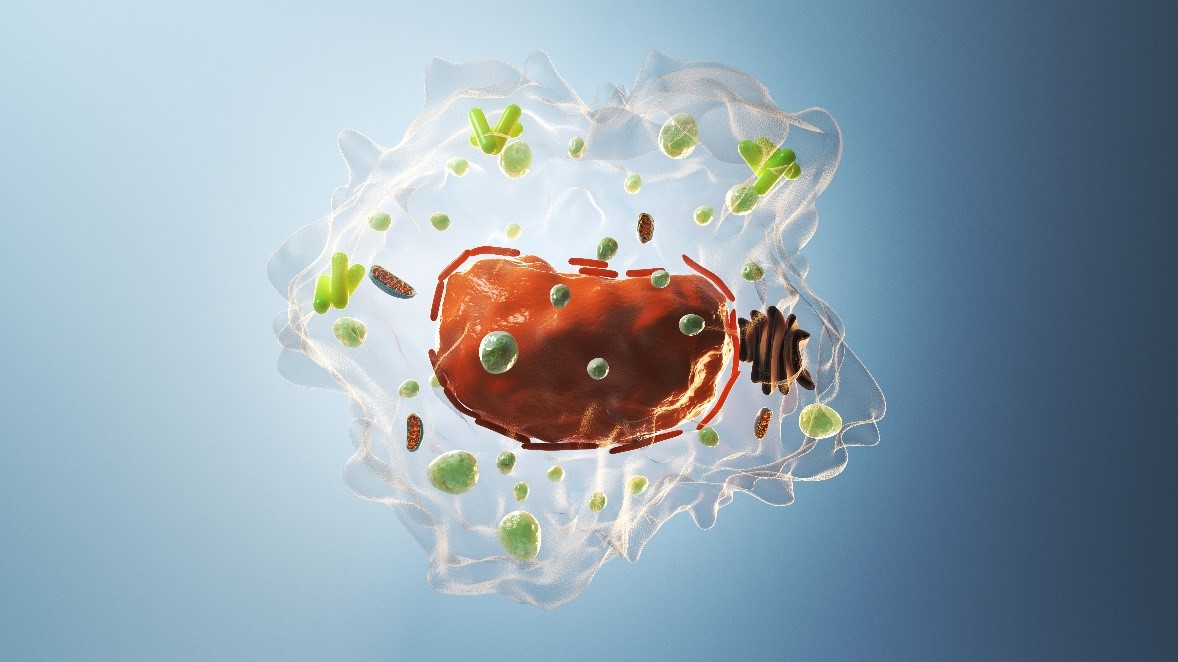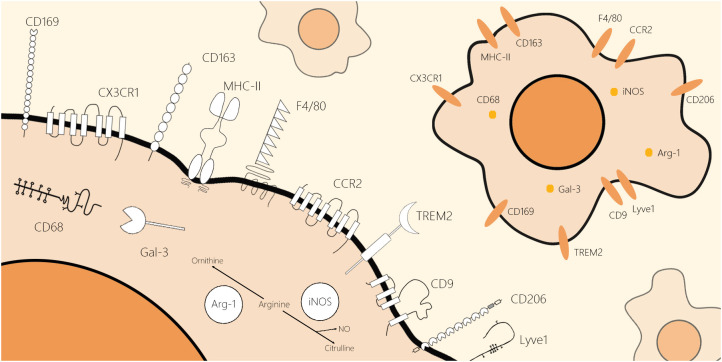Macrophage Marker CD Antigen
Related Symbol Search List
- CD74
- CD80
- CD84
- DPP4
- CD32A
- Fcgr2b
- CD45
- ENG
- CD16a
- FCGR3B
- FCGR4
- CD209
- CD163
- CD200R
- LTBR
- CD69
- CD68
- CD36
- CD40
- CLEC10A
- CD64
- GCA
- IFNGR1
- IGF1
- IL1R2
- Integrin beta 3
- LOXL2
- MARCO
- MSR1
- CD31
- PVR
- SLAMF7
- SLPI
Immunology Background
Available Resources for Macrophage Marker CD Antigen Research
Creative BioMart is a leading provider of resources dedicated to macrophage marker CD antigens, which help researchers gain a comprehensive understanding of information about macrophage marker CD antigens and their importance in immunology and medicine.
Including antibodies, recombinant proteins, protein pre-coupled magnetic beads, cell and tissue lysates, chromatography reagents, and other kits targeting macrophage marker CD antigens. |
Our team provides customized tools specifically designed for macrophage marker CD antigens research projects to ensure optimal results. |
Our platform provides macrophage marker CD antigens-related information including protein function, interacting proteins, related articles, and other relevant topics, which provide valuable reference and help to researchers. |
About Macrophage Marker CD Antigen
Macrophages, a type of immune cell, play a crucial role in the immune response by engulfing and digesting foreign particles, dead cells, and damaged tissues. Various surface proteins, known as CD antigens, are expressed on the surface of macrophages and serve as markers for identifying and studying these cells. These antigens are often used in research and clinical settings to study macrophage populations and understand their roles in various physiological and pathological processes. Here are a few commonly used macrophage marker CD antigens:
- CD14 is a well-known macrophage marker expressed on the surface of monocytes, macrophages, and dendritic cells. It plays a critical role in the recognition and response to bacterial pathogens by acting as a co-receptor for Toll-like receptors (TLRs) and facilitating the activation of downstream signaling pathways.
- CD6 is a heavily glycosylated transmembrane protein predominantly expressed on macrophages and monocytes. It is involved in various macrophage functions, including phagocytosis, antigen presentation, and tissue remodeling. CD68 is commonly used as a marker to identify and quantify macrophages in tissues and distinguish them from other immune cell types.
- CD163 is a scavenger receptor predominantly expressed on macrophages of the anti-inflammatory M2 phenotype. It functions as a receptor for hemoglobin-haptoglobin complexes and plays a role in iron homeostasis and anti-inflammatory responses. CD163 is considered a valuable marker for M2 macrophages in tissue sections and immunophenotyping.
- CD206 (Mannose Receptor is a macrophage-specific receptor that recognizes and binds to mannose and other carbohydrate ligands. It is predominantly expressed on macrophages in tissues, including those associated with immune responses and tissue repair. CD206 is commonly used as a marker for M2 macrophages involved in anti-inflammatory and tissue healing processes.
These are just a few examples of CD antigens commonly used as markers for macrophages. Each antigen provides valuable information about macrophage populations and their functions in different contexts, such as inflammation, infection, and tissue repair.
By utilizing these macrophage marker CD antigens, researchers can gain insights into the phenotypic and functional diversity of macrophages, contributing to a better understanding of their roles in health and disease.

Macrophage Marker CD Antigens Communication Pathways with Other Immune Cells
The communication pathways through which the macrophage marker CD antigen interacts with other immune cells are crucial for coordinating immune responses. Here are some key pathways involved:
Direct Cell-Cell Contact
- Antigen Presentation: Macrophages present antigens via major histocompatibility complex (MHC) molecules, interacting with T cells through CD antigen recognition.
- Intercellular Adhesion: CD antigens facilitate adhesion molecules' interaction, promoting cell-cell adhesion and signaling.
- Example 1: Macrophages express ICAM-1 (Intercellular Adhesion Molecule-1), which interacts with lymphocyte function-associated antigen-1 (LFA-1) on T cells. This interaction facilitates the adhesion and migration of T cells towards macrophages, promoting immune cell interactions and activation.
- Example 2: CD14, a well-known macrophage marker, interacts with TLRs (Toll-like receptor) on other immune cells such as neutrophils and dendritic cells upon binding to lipopolysaccharides (LPS), initiating inflammation responses.
Soluble Mediators
- Cytokine Signaling: Macrophages release cytokines (e.g., TNF-α, IL-6) that impact the activation and differentiation of various immune cells expressing corresponding CD antigens.
- Chemokine Secretion: Chemokines produced by macrophages attract specific immune cells to the site of inflammation, guiding their migration through CD antigen signaling.
- Example 1: Macrophages produce chemokines, such as CCL2, CCL3, and CCL5, which attract and recruit other immune cells to sites of inflammation or infection. For example, CCL2 attracts monocytes and T cells, while CCL3 and CCL5 attract various immune cells, including neutrophils and lymphocytes.
- Example 2: Macrophages produce prostaglandins, such as prostaglandin E2 (PGE2), which can modulate the functions of neighboring immune cells. PGE2 can suppress T cell proliferation and promote regulatory T cell differentiation.
Signal Transduction
- CD Antigen Receptor Signaling: Activation of CD antigens triggers intracellular signaling cascades that regulate immune cell functions and responses.
- Co-stimulatory Signaling: CD antigens serve as co-stimulatory molecules during immune cell activation, influencing the strength and duration of immune responses.
- Example: CD40 expressed on macrophages interacts with CD40 ligand (CD40L) on T cells, leading to the production of pro-inflammatory cytokines and the activation of both cell types.
Phagocytosis and Antigen Processing
- Phagocytosis: Macrophages engulf pathogens or debris, processing antigens for presentation to other immune cells via CD antigen recognition.
- Antigen Cross-Presentation: Macrophages can cross-present antigens to activate CD8+ T cells, involving CD antigen interactions.
- Example 1: CD47 on macrophages interacts with SIRPα on dendritic cells, regulating the phagocytosis of apoptotic cells and maintaining immune tolerance.
- Example 2: Macrophages expressing CD1 molecules can present lipid antigens to T cells, activating specific immune responses against pathogens.
Modulation of Immune Responses
- Tolerance Induction: CD antigens on macrophages can contribute to immune tolerance by interacting with regulatory T cells and promoting immune homeostasis.
- Inflammatory Responses: CD antigen-mediated communication can drive pro-inflammatory responses, mobilizing and activating immune cells in the inflammatory cascade.
Understanding these pathways is crucial for appreciating the complex and dynamic interactions orchestrated by CD antigens on macrophages to regulate immune responses and maintain immune system equilibrium.
 Fig.1 Schematic molecular structure and location of classical and novel markers of the macrophages. These markers of macrophages can be roughly divided into two categories by their location: cell surface markers and intracellular markers. F4/80, CCR2, CD169, CX3CR1, CD206, CD163, Lyve1, CD9, TREM2, and MHCII are macrophage markers located on the cell membrane. Moreover, CD68, iNOS, Arg-1, and Gal-3 are macrophage markers located inside the cell. All schematics of markers are based on their two-dimensional molecular structure. (Wei Q, et al., 2023)
Fig.1 Schematic molecular structure and location of classical and novel markers of the macrophages. These markers of macrophages can be roughly divided into two categories by their location: cell surface markers and intracellular markers. F4/80, CCR2, CD169, CX3CR1, CD206, CD163, Lyve1, CD9, TREM2, and MHCII are macrophage markers located on the cell membrane. Moreover, CD68, iNOS, Arg-1, and Gal-3 are macrophage markers located inside the cell. All schematics of markers are based on their two-dimensional molecular structure. (Wei Q, et al., 2023)
Introduction to the Use and Significance of the Macrophage Marker CD Antigen in Disease Research
The macrophage marker CD antigens have significant applications in various areas of research, including immunology, tumor research, and infectious disease research.
Immunology research
Macrophages are key players in the immune response, and CD antigens serve as valuable markers for studying their behavior and functions. By utilizing specific CD antigens, researchers can identify and isolate macrophage subsets, characterize their activation states, and investigate their roles in immune regulation, inflammation, and tissue repair. For example, the expression of CD14 and CD163 can help differentiate between pro-inflammatory (M1) and anti-inflammatory (M2) macrophages, providing insights into their distinct functions and immunomodulatory properties.
Tumor research
Macrophages play a dual role in tumor progression, with both pro-tumor and anti-tumor functions. CD antigens allow researchers to identify and analyze tumor-associated macrophages (TAMs) within the tumor microenvironment. TAMs have been shown to influence tumor growth, invasion, and metastasis. By studying specific CD antigens expressed on TAMs, such as CD68 and CD206, researchers can gain insights into the interactions between macrophages and tumor cells, potentially leading to the development of targeted therapies and immunotherapies.
Infectious disease research
Macrophages play a critical role in host defense against infectious pathogens. CD antigens provide valuable tools for studying the interactions between macrophages and pathogens, as well as the subsequent immune responses. For instance, the expression of CD14 on macrophages is essential for the recognition of bacterial components, triggering inflammatory responses and phagocytosis. By studying CD antigens on macrophages, researchers can investigate the mechanisms underlying pathogen recognition, immune evasion, and the development of host-directed therapies.
In all of these research areas, the application of macrophage marker CD antigens allows for a more comprehensive understanding of macrophage functions, heterogeneity, and their contribution to disease processes. These markers enable researchers to identify and isolate macrophages from complex cellular populations, characterize their phenotypes and activation states, and explore their interactions with other immune cells, pathogens, or tumor cells.
By utilizing macrophage marker CD antigens, researchers can potentially uncover novel therapeutic targets, develop immunotherapies, and gain insights into disease mechanisms, ultimately leading to improved diagnosis, treatment, and prevention strategies in immunology, tumor research, and infectious disease research.
Creative BioMart is dedicated to customer satisfaction and is committed to providing quality products and services to researchers, scientists, and companies worldwide. We are dedicated to supporting your research projects and experiments to help you achieve more success. If you have any questions, requirements, or cooperation intentions, please feel free to contact us. We very much look forward to working with you and helping you achieve research and commercial success.
Related References
- Lendeckel U, Venz S, Wolke C. Macrophages: shapes and functions. ChemTexts. 2022;8(2):12.
- Nikovics K, Favier AL. Macrophage Identification In Situ. Biomedicines. 2021;9(10):1393.
- Wei Q, Deng Y, Yang Q, Zhan A, Wang L. The markers to delineate different phenotypes of macrophages related to metabolic disorders. Front Immunol. 2023;14:1084636.

